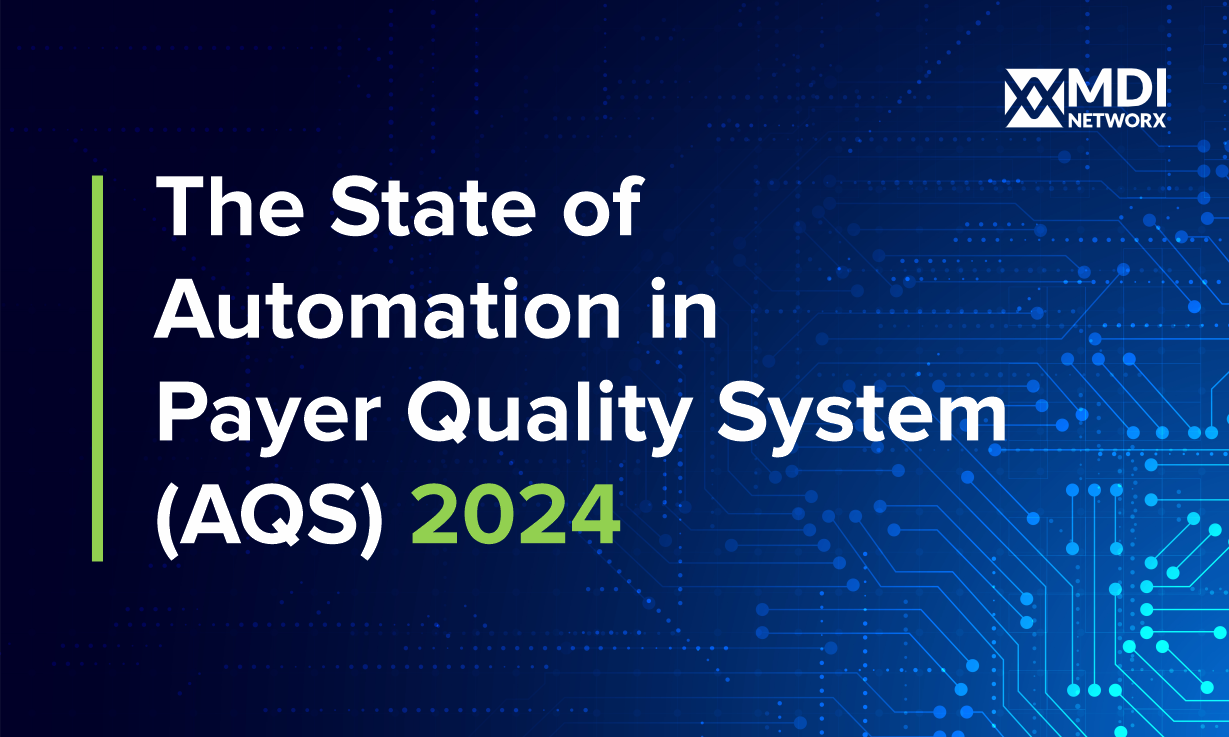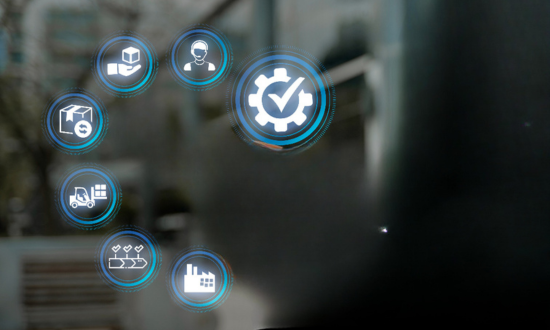AI and automation have become integral parts of modern healthcare businesses, revolutionizing various aspects of operations. In this guide, we have focused on the power of AI and automation in modernizing the digital mailroom system. We will examine the major difference between AI and automation and how they enable businesses to enhance efficiency and accuracy while reducing costs.
AI vs Automation
Everyone is talking about AI and automation, but few realize these words are not interchangeable. While AI aims to execute complex human tasks that require decision-making, automation seeks to eliminate the necessity of human labor for repetitive and remedial tasks.
The digital mailroom plays a crucial role in healthcare organizations by handling incoming and outgoing mail, documents, and attachments. Traditionally, this process involved manual sorting and routing, which could be time-consuming and error-prone. However, with the advent of AI and automation, businesses can transform their digital mailrooms into efficient and streamlined operations.
The Benefits of AI and Automation in Digital Mailroom
Improved efficiency and productivity
AI and automation in the digital mailroom significantly expedite the mail sorting and distribution process, leading to improved efficiency and increased productivity. Traditional manual mail sorting can be time-consuming and labor-intensive, often resulting in bottlenecks and delays. However, with AI technology, the system can automatically scan and digitize incoming mail, extracting relevant data like sender information, dates, and subject matter. This digital transformation eliminates manual sorting and speeds up mail processing, ensuring that important documents and correspondence reach their intended recipients promptly.
Moreover, advanced automation systems can categorize and prioritize mail based on predefined rules, ensuring urgent or critical items receive immediate attention. This seamless integration of AI and automation optimizes the entire mailroom workflow, allowing your staff to focus their time on more worthwhile tasks.
Reduced manual errors
In any manual process, the likelihood of errors and inaccuracies is ever-present. Misplaced documents, incorrect mail distribution, and data entry mistakes can lead to costly consequences and negatively impact the organization's reputation. Harnessing the power of AI and automation minimizes the risk of manual errors in the digital mailroom.
AI technology, combined with machine learning algorithms, continuously improves its accuracy over time, resulting in higher precision in identifying and categorizing different types of mail. Automation handling repetitive and mundane tasks dramatically reduces human errors, ensuring the right information reaches the right people without unnecessary delays or mistakes.
Enhanced security and data privacy
Data security and privacy are critical concerns, especially in healthcare. Failure to comply with HIPAA regulations, even due to an accidental breach, can result in fines and damage to your organization's reputation.
Digital mailrooms are vulnerable to unauthorized access, leading to potential data breaches and confidential information leakage. Implementing AI and automation technologies offers heightened security measures to safeguard sensitive data.
Digital mailrooms utilize encryption and secure cloud-based storage to protect incoming and outgoing correspondence. Access controls can be enforced, limiting access to authorized personnel only. Additionally, AI-powered algorithms can automatically detect and flag suspicious or potentially malicious content, further bolstering the organization's cybersecurity posture.
Cost savings
One of the most tangible benefits of incorporating AI and automation in the digital mailroom is the potential for substantial cost savings. Traditional mailroom operations often incur significant labor expenses. By transitioning to a digital mailroom, businesses can eliminate the need for additional personnel, which reduces labor costs and ensures better resource allocation. The time saved on mail processing and distribution translates to increased efficiency and productivity, ultimately yielding cost savings across the organization.
How AI and Automation Technologies are Transforming Digital Mailroom
The advent of AI and automation technologies in recent years has ushered in a new era of efficiency and productivity in the modern digital mailroom. These cutting-edge innovations have revolutionized traditional mailroom operations, making them more streamlined, accurate, and adaptable to the fast-paced business landscape.
Intelligent document classification and routing
In a digital mailroom, handling diverse types of incoming documents efficiently is paramount. AI-driven intelligent document classification employs machine learning algorithms to automatically categorize and route incoming mail based on content and context. This technology recognizes patterns and keywords, allowing it to distinguish between various document types, such as patient charts, test results, prescriptions, and more.
By efficiently sorting and routing documents, this technology ensures that critical information reaches the right recipients promptly. Moreover, the system can prioritize certain documents for immediate attention, reducing response times for urgent matters. This intelligent classification and routing enhance productivity and enable seamless collaboration within the organization.
OCR (Optical Character Recognition) for extracting data
Emails often contain vital information that needs to be quickly processed and integrated into digital workflows. Optical Character Recognition (OCR) is a fundamental AI-powered technology used in the digital mailroom to convert scanned or photographed documents into machine-readable text.
OCR technology identifies the document's characters, numbers, and symbols, allowing for automated data extraction. This data can then be seamlessly integrated into various applications and databases, eliminating the need for manual data entry. OCR technology greatly reduces processing time, minimizes errors, and ensures accurate data capture, boosting overall operational efficiency in the digital mailroom.
Automated workflows and task management
Automation plays a pivotal role in streamlining workflows within the digital mailroom. AI-driven automation tools can manage and execute various mailroom tasks without human intervention. Once the incoming mail is classified and data is extracted using OCR, digital mailroom automation can be initiated to route the documents to the appropriate departments or individuals.
These automated workflows can be customized based on predefined business rules, ensuring that each document follows the designated path for processing and approval. The system can also trigger notifications and reminders for pending actions, reducing the risk of delays or missed deadlines. By automating routine tasks, employees can focus on more strategic and value-added activities, improving overall productivity and job satisfaction.
Integration with other systems and applications
AI and automation technologies in the digital mailroom can seamlessly integrate with other systems and applications within the organization. This interoperability enhances data sharing and accessibility, leading to a more interconnected and efficient business ecosystem.
For instance, integrated with customer relationship management (CRM) systems, the digital mailroom can automatically update customer records based on incoming correspondence. Similarly, integration with enterprise resource planning (ERP) systems can facilitate automated invoice processing and payment, streamlining financial operations.
Moreover, integration with collaboration tools and communication platforms ensures that relevant documents are readily available to team members, promoting real-time collaboration and informed decision-making.
Considerations for Implementing AI and Automation in Digital Mailroom Solutions
Choosing the right technology and vendors
It's essential to evaluate different AI and mailroom automation software to find the ones that best fit your organization’s needs. Additionally, partnering with reputable vendors can ensure successful implementation and ongoing support.
Addressing potential challenges and risks
While AI and automation offer significant benefits, potential challenges, such as system integration or employee resistance to change, must be considered. Developing strategies to address these challenges will contribute to a smoother implementation process.
Developing a comprehensive implementation plan
A well-defined implementation plan is crucial for successfully deploying AI and automation in the digital mailroom. It should include clear objectives, timelines, milestones, sufficient resources, and employee training.
Training and change management
Introducing AI and automation technologies may require employees to adapt to new working methods. Providing comprehensive training and change management support can help employees embrace the changes and maximize the benefits of the new digital mailroom for healthcare.
Modernize Your Digital Mailroom with Automation
The power of AI and automation in modernizing the digital mailroom cannot be overstated. By leveraging these technologies, businesses can unlock significant efficiency gains, reduce errors, enhance security, and achieve substantial cost savings. Regardless of an organization's size, the transformative impact of AI and automation on mailroom operations is inevitable.
As technology advances, the future of mailroom management systems holds even more potential. AI and automation will continue evolving, offering businesses new possibilities for streamlining operations, enhancing customer service, and driving growth. By embracing these mailroom services, businesses can position themselves at the forefront of innovation and propel their organizations into the digital age.




